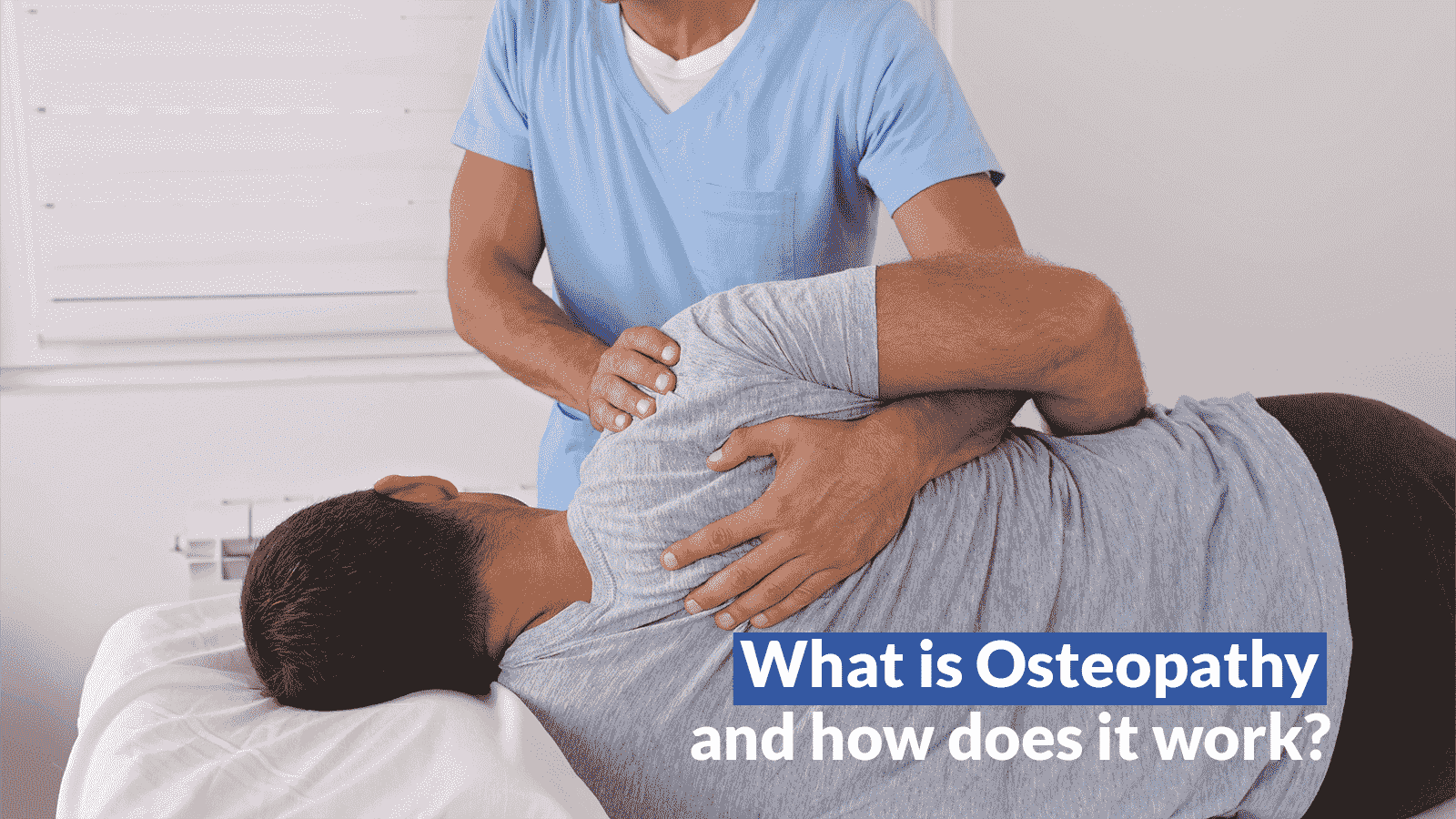Osteopathy, derived from the Greek words for bone (osteon) and suffering (pathos), is more than just a band-aid for pain. It goes beyond symptom management by targeting the root causes of pain and discomfort.
Osteopathy offers a comprehensive treatment approach that encompasses manual techniques, lifestyle modifications, and personalised exercise programs. With its growing recognition and positive patient outcomes, osteopathy is carving its place in the healthcare landscape globally.
What is Osteopathy?
Osteopathy, as a distinct form of medical therapy, traces its roots back to the late 19th century. It was founded by Dr Andrew Taylor Still, a physician from Missouri, United States. Dr Still held a unique perspective on healthcare, believing that the human body possessed inherent restorative abilities when its systems were in optimal working order.
Driven by this philosophy, Dr Still developed a comprehensive approach that incorporated manual techniques aimed at improving bodily functions and facilitating the body’s innate capacity for healing. In 1885, his innovative approach was formally recognised as “osteopathy.”
To disseminate his teachings and ensure the continued growth of osteopathy, Dr Still founded the American School of Osteopathy in 1892. Located in Kirkville, USA, the school served as a platform for educating aspiring practitioners in Dr Still’s methodologies.
Over time, osteopathy gained recognition and acceptance as a particular healthcare discipline.
Today, osteopathy is practised worldwide, with osteopaths treating a wide range of conditions, including musculoskeletal pain, sports injuries, chronic pain syndromes, and even contributing to preventive care. Osteopathic principles and techniques have evolved, incorporating scientific advancements while staying true to the holistic approach pioneered by Dr Still.
At its core, osteopathy is a safe and effective therapy that aims to restore balance within the body. The fundamental philosophy of osteopathy revolves around achieving harmony to optimise health and movement.
What Is An Osteopath?
Osteopaths are physicians in the USA. Everywhere else we are trained as osteopaths with no Dr training. An osteopath is a highly trained and licensed physician, known as a doctor of osteopathic medicine (DO). They prioritise treating the whole person rather than just isolated symptoms or diseases.
Osteopaths undergo comprehensive training and education, earning a Bachelor of Science and a Master of Osteopathy degree. They acquire in-depth knowledge about how the body works, including biomechanics (how the body moves), ergonomics (how to optimise posture and movement), nutrition, and exercise rehabilitation.
With their specialised expertise, osteopaths can effectively alleviate pain and prevent future discomfort. They achieve this by using a hands-on approach called osteopathic manipulative medicine, which helps restore balance and symmetry to the body. By addressing any imbalances or restrictions, osteopaths can help reduce pain and promote overall well-being.
The Treatments Offered by Osteopaths
Osteopaths begin their hands-on treatment by conducting a comprehensive whole-body examination to identify areas of misalignment.
The subsequent manual therapy they provide is primarily non-invasive and drug-free, focusing on correcting the musculoskeletal framework.
This manual approach enables them to identify the source of pain, which is the fundamental step. Osteopaths offer effective osteopathic treatment for reducing the risk of future injuries or prolonged discomfort.
Osteopaths manipulate and strengthen joints, muscles, and the spine to restore balance, alleviate pain, and promote healing.
The Benefits of Osteopathy
Pain reduction: Osteopathy aims to alleviate pain, making it a popular choice among clients seeking relief.
Improved body systems: Osteopathic treatment positively impacts the respiratory, nervous, lymphatic, and circulatory systems.
Preventive measure: Osteopathy is a preventive therapy to minimise the risk of injuries and pain.
Addressing common issues: Osteopathy effectively tackles various issues such as arthritis, back pain, headaches, stress, digestive problems, postural issues, insomnia, sciatica, knee pain, and neuralgia.
How Is Osteopathy Different From Physiotherapy?
While physiotherapy may employ similar techniques, it often incorporates aids and devices as part of the treatment process. While Osteopaths may recommend complementary therapies, prescribe specific exercises, or suggest diagnostic imaging if deemed necessary, it’s important to note that these interventions are never their initial preference. The emphasis remains on the hands-on approach and non-invasive nature of osteopathic treatment as the primary mode of treatment.
Who Can Benefit From Osteopathy Treatment?
Osteopathic treatment is a non-intrusive therapy suitable for individuals across all healthcare areas.
Enhancing Well-Being with Chronic Conditions
Finding Relief: Osteopathy for Fibromyalgia, Arthritis, and Chronic Fatigue Syndrome
Improving Mobility: Restoring Function and Reducing Pain
Holistic Approach: Enhancing Overall Well-Being
Breathing Easy: Respiratory Health with Osteopathy
Alleviating Respiratory Symptoms: Asthma, Chronic Bronchitis, and Allergies
Enhancing Lung Capacity: Techniques for Better Breathing
Promoting Healthy Respiratory Patterns: Restoring Balance
Digestive Harmony: Osteopathic Support for Digestive Disorders
Soothing Acid Reflux: Addressing Gastrointestinal Discomfort
Managing Irritable Bowel Syndrome (IBS): Improving Digestion and Reducing Symptoms
Promoting Regularity: Osteopathy for Constipation Relief
Office Workers: Improving Posture and Alleviating Strains
Postural Improvement: Enhancing Ergonomics and Comfort
Headache Relief and Strain Reduction
From Injury to Recovery: Osteopathy in Sports Medicine:
Sports-Related Injuries: Sprains, Strains, and Repetitive Strain Injuries
Alleviating Pain and Restoring Function: Osteopathic Techniques for Recovery
Preventing Future Injuries: Strengthening and Optimising Performance
Supporting Pregnancy Wellness
Easing Pregnancy Discomfort: Osteopathy for Back Pain, Pelvic Pain, and Postural Imbalances
Preparing for Childbirth: Enhancing Body Readiness
Postpartum Recovery: Supporting the Body’s Healing Process
Proactive Health Maintenance: Preventive Care with Osteopathy:
Optimal Health and Well-Being: Regular Osteopathic Treatments
Injury Prevention: Promoting Strength and Resilience
Embracing a Holistic Lifestyle: Enhancing Overall Wellness
Stress Relief and Emotional Well-Being:
Holistic Healing: Reducing Stress Levels with Osteopathic Treatment
Restoring Balance: Promoting Relaxation and Emotional Well-Being
Nurturing the Nervous System: Addressing Tension and Promoting Serenity
Elderly Care: Maximizing Mobility and Independence
Essential for Maintaining Mobility as We Age
Enhancing Quality of Life and Independence
Pediatric Care: Supporting Child Well-Being and Healthy Growth
Acknowledging Osteopathy’s Potential for Children
Ensuring Healthy Development and Well-Being
How Can an Osteopath Help You?
Each individual is unique, and so is their condition. Through techniques such as deep tissue massage, joint manipulation, and stretching, osteopaths can target and alleviate tension and restrictions that may be causing the symptoms.
And by addressing tension, restrictions, and injuries, osteopaths work towards bringing the body back into harmony and enabling it to function optimally.
Osteopaths also focus on rehabilitation exercises – they provide education on proper movement techniques, which help you recover from injuries and minimise the risk of future occurrences.
A Typical Osteopathic Treatment Consultation
Here’s what to expect after booking a session with an osteopath:
The initial step involves a thorough discussion of your symptoms. The osteopath will attentively listen to your concerns, seeking to understand how they impact your everyday life. This comprehensive understanding is vital for establishing an accurate diagnosis and devising a focused treatment plan that suits your unique circumstances.
Following the discussion, a comprehensive physical assessment will be conducted. The osteopath will evaluate various aspects, including your posture, mobility, and perform orthopaedic and neurological examinations. These assessments help identify any imbalances, limitations, or underlying factors contributing to your symptoms.
By combining the information gathered from the discussion and physical assessment, the osteopath can offer you a precise diagnosis. This diagnosis serves as the foundation for developing a customised treatment plan that addresses your specific needs and goals.
The Best Osteopath Near Me in Sydney
Looking for the best osteopath near you in Sydney? Look no further than our best osteopathy clinic in Potts Point, where we offer a patient-centred approach.
Led by Phil Austin, a highly qualified and experienced osteopath, we combine hands-on techniques like massage, stretching, and joint manipulation to address musculoskeletal problems and facilitate general well-being.
To book an appointment or learn more about our services, call us at 02 9356 0495 or visit our website. Take the first step towards a pain-free and healthier life with our exceptional osteopathy care.


